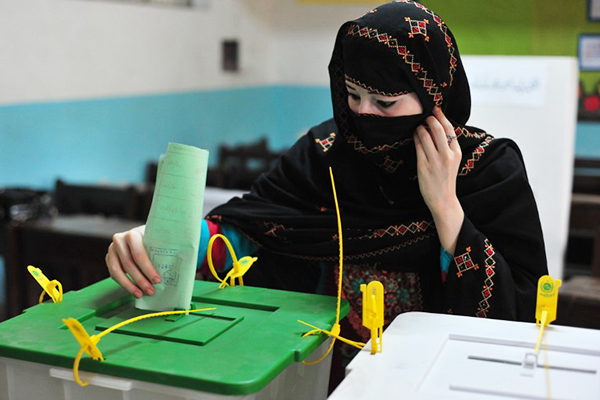
File photo. Farooq Naeem—AFP
Latest data issued by the Election Commission of Pakistan (ECP) shows roughly 130 million registered voters in the country, comprising a little over 60 million women and more than 70 million men, leaving a gender gap of 9.95 million. This follows the addition of 11.74 million women against 9.28 million men to the electoral rolls since the 2018 general elections. While the decline in the gender gap is a welcome development, it continues to be concerning, especially as women comprise 49 percent of Pakistan’s population but continue to lag in political participation. They key reason for the persistence of this gap is societal norms in Pakistan’s conservative, patriarchal society, which have effectively barred many women from exercising their right to vote in the past.
Despite being the first Muslim state to elect a woman prime minister, Pakistan continues to see conservative forces actively discouraging women from voting. The country’s plodding courts have been slow to uphold legal challenges to these practices, while the requirement of a Computerized National Identification Card (CNIC) for eligibility to vote has also hampered women’s participation, as barriers to movement deter them from securing the documentation.
Lawmakers have attempted to address the issue, with the Elections Act, 2017 requiring the participation of at least 10 percent of women voters in all constituencies for polling to be considered valid, to little avail. To course correct, Pakistan could take a page from neighboring India, which has similar societal norms, but saw women’s turnout in its 2019 elections exceed that of the men. This is despite a decline in the labor force participation of women, indicating that both the household and government efforts to raise voter awareness must work in tandem for maximum effectiveness.
